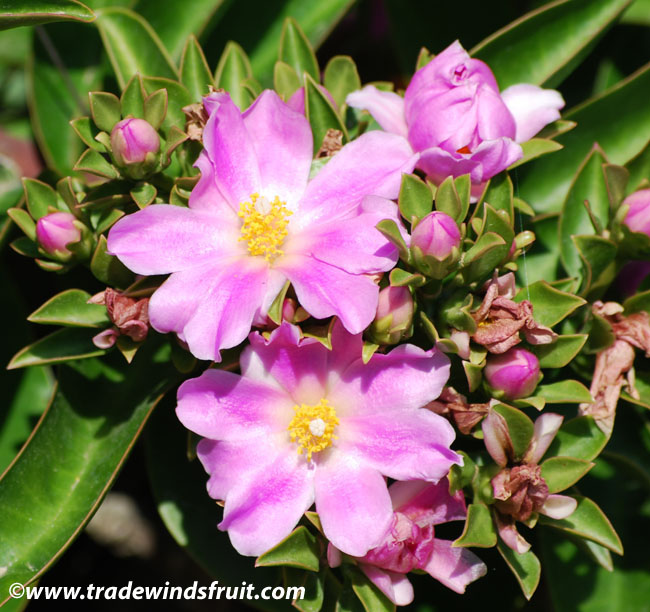Pereskia grandiflora, commonly known as the Rose Cactus, stands out in the botanical world not merely for its striking appearance, but also for its distinct lineage within the cactus family. Unlike many other cacti that epitomize the archetypal desert plant, with their spiny surface and minimal foliage, the Rose Cactus invites admirers with lush green leaves and vibrant flowers. This unusual morphology beckons the question: can a plant that is a cactus truly deviate so dramatically from our preconceived notions of what a cactus should be? A closer examination of the Rose Cactus reveals both its allure and its intriguing challenges as a houseplant.
What truly sets Pereskia grandiflora apart from its prickly relatives is its evolutionary heritage. As a member of the Pereskia genus, it occupies a unique niche within the Cactaceae family. Unlike more familiar cacti that have adapted to arid environments by developing drought-resistant features, Pereskia retains characteristics reminiscent of traditional angiosperms, or flowering plants. This divergence raises an interesting predicament; how do we care for a plant that challenges conventional wisdom regarding cactus cultivation? Understanding the biological and environmental needs of the Rose Cactus is crucial for successful gardening.
Origin and Distribution
The Rose Cactus is native to tropical regions of South America, particularly found in Brazil, where it thrives in humid and warm climates. It garners attention not only for its breathtaking blooms but also for its ability to adapt to various habitats, including wooded areas and rocky outcrops. This adaptability has allowed it to flourish outside of the typical cactus environment, blending seamlessly into lush landscapes.
Though it is often regarded as a rarity among cacti, Pereskia grandiflora has found its way into the collections of plant enthusiasts worldwide. The plant displays a striking message of biodiversity, showcasing the myriad ways that flora has evolved over time. However, this beauty comes with challenges, as those seeking to cultivate this unique cactus must be aware of its particular environmental preferences.
Physical Characteristics
One of the most captivating features of the Rose Cactus is its leaves. Unlike many cacti that present with spines or a minimalistic foliage, Pereskia grandiflora showcases thick, ovate leaves that are glossy and deep green. These leaves contribute to its ability to photosynthesize effectively in lower light conditions, a trait that can sometimes puzzle those familiar with typical cacti, which require bright, direct sunlight.
The flowers of the Rose Cactus add another layer to its appeal. Blooming intermittently throughout the year, these flowers emerge in stunning clusters of pink to white hues. Each bloom is a spectacle of nature, often large and flamboyant, capturing the attention of both pollinators and plant enthusiasts alike. The fragrant flowers not only enhance the plant’s beauty but also attract a variety of pollinators, playing an essential role in its reproductive cycle.
Habitat and Growing Conditions
To successfully cultivate Pereskia grandiflora, one must mimic its native habitat as closely as possible. While this plant exhibits a tolerance for different conditions, optimally, it prefers a warm, humid environment. An ideal temperature range is between 65°F to 85°F, as extreme cold can damage its leaves.
Soil selection is critical; a well-draining potting mix is essential, typically a blend formulated for cacti and succulents. While the plant can tolerate a bit more moisture than typical cacti, overwatering can lead to root rot, a common challenge faced by growers. Therefore, pay close attention to its watering schedule, especially in the dormant winter months.
Light conditions for Pereskia grandiflora can also be a source of confusion. Unlike most cacti that thrive under harsh sunlight, this unique species flourishes in bright, indirect light. A south-facing window with filtered sunlight is often ideal, simulating the dappled light of its natural wooded habitats. A balance of light and shade will induce robust growth while preventing sunburn on the delicate foliage.
Common Pests and Diseases
As with any plant, the Rose Cactus is susceptible to various pests and diseases. Mealybugs and spider mites are notorious for infesting cacti, and Pereskia grandiflora is no exception. Regular inspection and maintaining healthy air circulation can help mitigate these challenges. If an infestation occurs, treating the plant with insecticidal soap or neem oil can help effectively eliminate pests without harming the disease-resistant qualities of the cactus.
Conclusion: Embracing the Challenge
Cultivating Pereskia grandiflora presents both a rewarding and demanding experience. Its unique aesthetics and growth habits challenge conventional viewpoints about cacti and their care. For those willing to embrace the intricacies of its requirements, the Rose Cactus offers a refreshing perspective on gardening and plant care. Will this fascinating plant find a place in your gardening endeavors? With attention, patience, and a touch of adventure, Pereskia grandiflora can undoubtedly thrive, showcasing its enchanting beauty for many seasons to come.





Leave a Comment